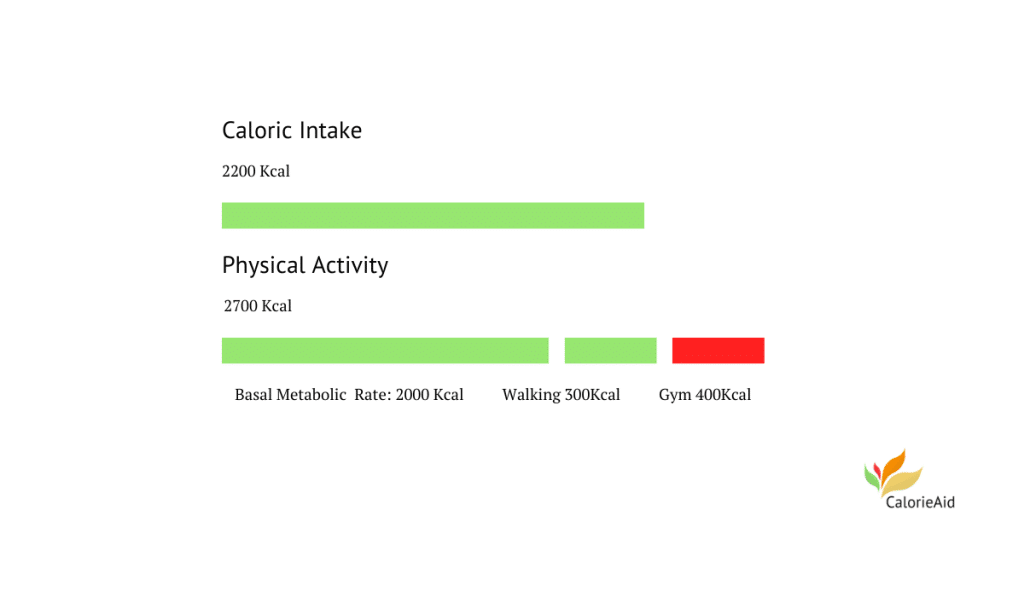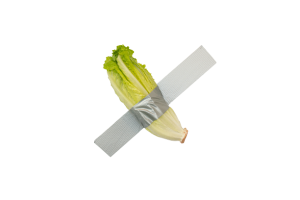Many people worldwide use a calorie deficit to lose weight. I used this method for the last 8 years, and it is a little bit tricky. In this article, I will explain the dos and don’ts of following a calorie-restricted diet, and I will provide you with all of the knowledge needed to get started. Let’s begin.
Table of Contents
What is the calorie deficit to lose weight?
Calorie deficit to lose weight is defined as eating less than your total daily energy expenditure (TDEE) so the rest of your energy needs will be substituted in your body by burning fat. The difference between your TDEE and caloric intake is called the “caloric gap”. Introducing caloric deficit to your diet is one of the oldest known ways to lose weight.
Calorie-deficit diets are divided into many types. The most effective and known ones are low-carb and low-fat diets. The reason why these diets work the best is that fat and carbs are the main sources of energy used by your body.

Calorie Deficit Importance to Lose Weight
The calorie deficit’s role in losing weight is that it creates dietary intake less than the physical output. This will cause the body to burn fat to compensate for the difference. This difference is known as the caloric gap as I mentioned. The bigger the gap, the greater the weight loss. However, you shouldn’t aim for a very large gap, and I will explain more later.
Is calorie deficit to lose weight the only/best way?
Calorie deficit to lose weight is not the only way. There’s a plethora of diets out there for you to choose from. The best way to choose a diet for yourself is to try a diet for a week and see what is best for you. Beware of certain restrictions these diets might impose on a nutrient your body might need. A study that was done in 2014 to compare different diets, concluded that low-carb and low-fat diets are the most effective in weight loss. Be sure to consult a medical expert if you have a pre-existing medical condition to make sure that the diet is suitable for you.
Calorie deficit to lose fat and gain muscle
When people say they want to lose weight they usually mean that they want to lose fat and sometimes gain muscle. To achieve a diet with a calorie deficit to lose weight and gain muscle you have to consider several elements that need to be included within the diet. These elements are essential to a healthy diet and might produce health problems in the future if neglected. These elements include:
Protein
It is the essential building block for your body. If you are cutting calories, you shouldn’t be cutting protein and your body should get enough. Another effect of protein is that it makes you feel full, so it eases the diet for you.
Fiber
Like protein, fiber makes you feel full as well. Eating the right amount of fiber will result in a loose stool and prevent constipation, however, consuming more than you should will cause diarrhea.
Sugar
Unlike protein and fiber, sugar will make you feel hungry, so you should eat less of it. Sugar causes your blood level to rise and crash rapidly to leave you hungry and low on energy. Sugar is useful in two scenarios: when breaking a fast, and after exercise. You still need to put a restriction on the amount you consume.
Micronutrients
The first reason to “eat your greens” is to fulfill your daily micronutrient needs. Many important vitamins and minerals come from fruits and vegetables, and including a variety of them is a must.
Volume
The first thing that comes to mind when you think of a calorie deficit to lose weight is a small portion size that will leave you hungry. This shouldn’t be the case if you include low-caloric density foods like fruit and vegetables, and that is the second reason why you should eat your greens.
Pre-existing medical condition
As we discussed before, please consult a medical expert if you have such a condition.
If you need more details, check my article on healthy diets, to make sure that you don’t just follow a diet but a completely healthy lifestyle.
Factors affecting the calorie deficit to lose weight
Many factors can affect the calorie deficit to lose weight, but the most common ones are:
- Your diet. If you eat more you’re going to have a smaller calorie gap. However, reducing what you consume is not always the best strategy. You’ll need protein and fiber to ensure a healthy diet, and can be affected if you reduce your intake too much (i.e. your minimum daily protein and fiber needs will impose a certain threshold on your caloric deficit).
- Basal Metabolic Rate. BMR is what your body burns without activity for sustenance, and it can be affected by many factors including age, height, biological sex, and muscle mass. It can also be affected by your body’s regulatory mechanisms, which are affected by certain circumstances. For example, if you reduce your intake for a long time your body can reduce its BMR to accommodate the difference.
- Physical activity. Your daily physical activity including walking, workouts, and physical jobs can affect the size of the caloric gap.
Timeframe for weight loss
For an average person, losing anything between 0.5-2 kg/week of body weight is healthy for you (1-5 pounds). These numbers might be affected by your age, height, biological sex, and physical activity. This time frame also depends on your overall muscle and body composition. The more muscle you have the shorter the time you’ll need to lose weight. If you don’t have enough muscle mass you’ll need to build muscles with strength exercises and this can also take time.
Calculating calorie deficit to Lose Weight (and a calculator)
A solid basis on which we can assume the size of the caloric deficit is the healthy timeframe to lose weight we talked about earlier. To lose 0.5 kilograms of fat/week you’ll need to burn 3850 kcal, which roughly translates to 550 Kcal of a caloric gap daily. If you read my previous article about how many calories you need to burn to lose 1 Kilogram of body weight, You’ll know that you’ll lose more than 1 kg with that deficit. With a healthy timeframe in mind, calculate your desired calorie deficit with this calculator:
Strategies for a calorie deficit to Lose Weight
- Structure the calorie deficit to lose weight healthily. With the previous factors in mind, you need to increase your food intake up to the point where you meet your daily macronutrient needs and increase your physical activity to have a sufficient gap to lose weight.
- Ensure you get enough protein, fiber, and fat to keep you full. Once you feel hungry, sticking to the diet will be very hard in the long run.
- Space your meals in the best way that works for you. Ensure that your biggest meal is at the time you’ll feel most hungry, and vice versa.
- Exercise when you feel hungry. This will help burn the fat in your body to produce energy that will signal your brain to reduce hunger. Anything such as light walking helps.
- Increase food volume by adding low-caloric density foods (such as broths, some fruits, vegetables…etc.) to the point where you feel full. Substitute those for calorie-dense foods such as candy bars and fries. And stay away from junk food.
- Reduce stress by any means available such as exercise and meditation. This will help you if you’re a binge eater. See a psychologist if you feel your problem is bigger than you can manage alone.
- Only eat sitting down. Eating on the run never makes you feel full and your mind will still anticipate the next large meal.
- Try intermittent fasting. Start small by fasting between meals (and sometimes this is enough). Avoid any snacks and if you’re really hungry, go for a fruit or a vegetable.
A calorie deficit to lose weight Without exercise?
Going on a calorie deficit to lose weight without exercise is not impossible, but it is hard. Exercise can influence your body’s regulatory mechanisms and prevent them from reducing BMR. it also can increase the caloric gap and shorten the weight loss process. It can also build your muscles, which can in turn help you to lose weight. However, if you don’t exercise because you already have a physically demanding job, that’s fine. On the other hand, if you don’t have a physically demanding job then you can try various alternatives to prevent your body from cutting its BMR. The most effective method that I recommend is intermittent fasting. Combining intermittent fasting with a calorie deficit to lose weight is very effective. Add light walking and achieve your daily steps goal if you can.
Effectiveness of a calorie deficit for women
Meal planning with a calorie deficit
I love trying different foods and dishes all the time. And if you’re like me, repeating the same meals is boring. Being bored of your diet means you’ll break it eventually, and we can’t let that happen. With that being said, I generally try to incorporate the same elements into my everyday diet. These elements will eventually make the diet healthy and they are:
- Legumes. Good fiber and long-acting carb source source.
- Eggs or cheese. Good to add protein and fat, nice for breakfast.
- Low-fat or skimmed milk. To drink with tea or coffee, which is essentially a replacement for protein powder.
- Rice, Bread, or pasta. Twice daily to provide enough carbs for the diet
- Meat, fish, or chicken. This is the bulk of my protein intake
- Fruits and Vegetables. To get enough volume and micronutrients, I choose the most low-caloric density ones.
- A Healthy oil. Like olive oil, great for salads and shallow frying. Use it in small amounts because it has a lot of calories.
- Spices and seasoning. These generally have low or zero calories, and they are great for producing different flavor profiles every time.
Combining the above elements produces thousands of different recipes, so you can’t get bored with your diet. You can also use the above elements to produce a dish that you like to eat. Here’s a list of recipes that are around 500 Calories and can be easily modified according to your nutritional needs.
Conclusion
I hope I answered all of your questions about calorie deficit to lose weight, and if you have any more post them in the comments. What do you think is the most important thing you need to improve in what we discussed above? Share this article with someone who needs it, and has many questions about calorie-restrictive diets.


